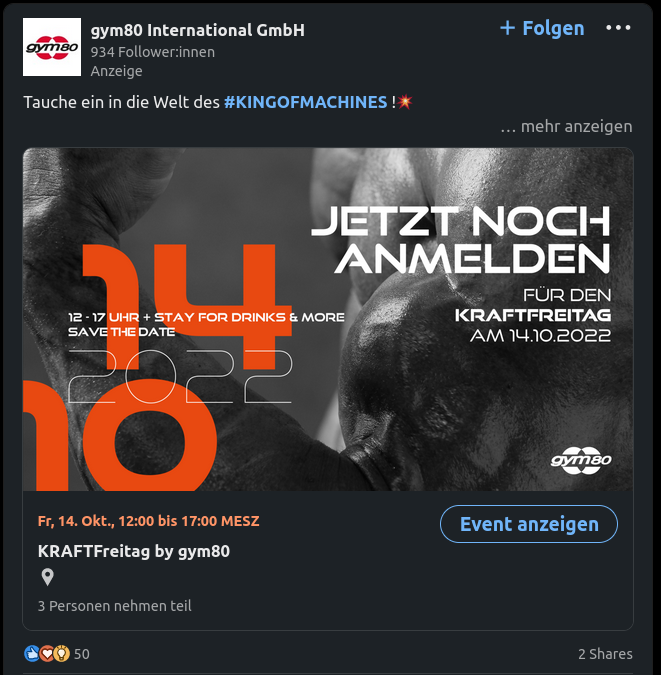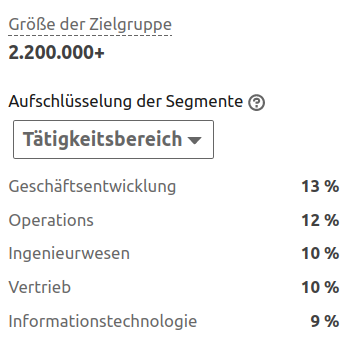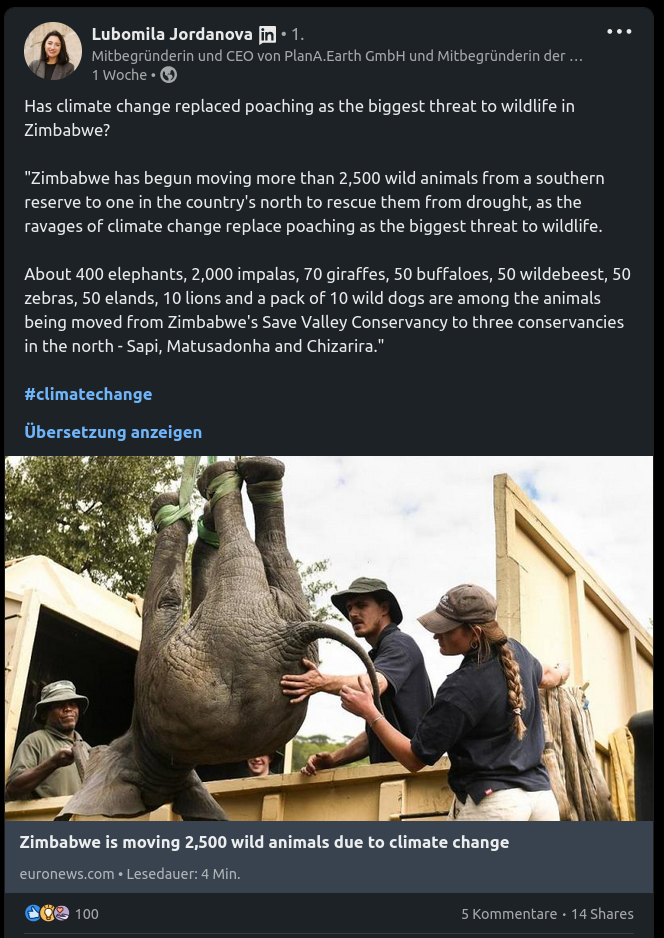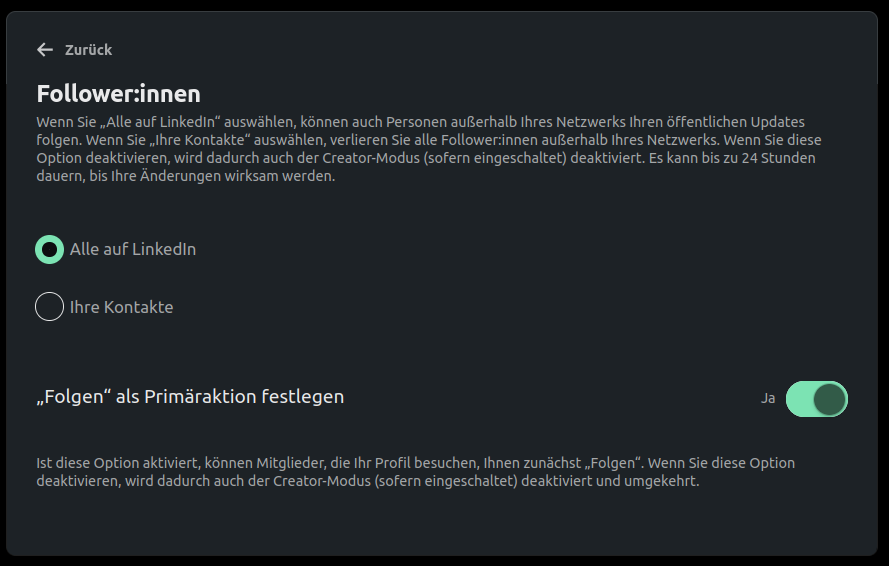Navigating Marketing Strategies During a Crisis
The financial crisis in 2009, the coronavirus pandemic in 2020-2022, the energy crisis in 2022 -...
By: Johannes Fiegenbaum on 4/30/24 11:31 AM

LinkedIn Ads do not work.
This is because the costs of customer acquisition are often not affordable for start-ups and SMEs. Compared to other social media platforms, advertising on LinkedIn is expensive and the conversion rate is low. If the CPM is €30+ and the cost per click is €4, the conversion rate or the quality of lead generation must be very, very good. But it is not.

LinkedIn ads are only suitable for companies in the fields of education, human resources and other professional advertisers who generate large sales per customer or pursue brand awareness goals. These topics are closely related to LinkedIn's core offering in recruitment and are therefore native content. In comparison, Facebook and Instagram are home to all types of content. (See also my article on the Facebook Ads Library to consciously analyze the content of competing advertisers).
Exceptions prove the rule. Of course, for topics outside of recruiting, there is always the opportunity to achieve success with smaller budgets and merciless iteration. LinkedIn Ads and other social advertising platforms do not work at the push of a button, but require consistency and consistency. Those who achieve this are already further ahead than the other 90%. However, at the end of such a LinkedIn Ads project, the initially small budgets quickly turn into large ones and most advertisers run out of breath beforehand. Not to mention the time invested, which is particularly valuable for start-ups.
Take a look at my article on basic startup marketing strategy too.
Targeting in your own LinkedIn feed
Where does LinkedIn generate the most revenue?
Instead of LinkedIn Ads: organic content
Bonus: Optimize your own LinkedIn profile
To understand the poor performance of advertising on LinkedIn, you only have to look at two things.
When I look at my feed, I see sponsored content ads for urban tree watering, print ads for inflation scenarios, a muscle-building event (?), a travel newsletter and a job ad.

If I make a rough estimate, out of 10 LinkedIn ads, 6are completely irrelevant, 3are almost irrelevant and 1 is relevant.
Now you could say that these advertisers have simply selected the wrong targeting in the LinkedIn campaign manager. With correct targeting or even a matched audience, I would also see relevant ads. But unfortunately this is only true to a small extent, even if I don't use an iPhone with ATT.
Because even if it looks like it in the LinkedIn Ads Manager, many of the LinkedIn B2B targeting options are based on false data because it is data that is only indirectly derived. And exactly where it gets interesting, the data becomes inaccurate and unclear.

From my experience of many LinkedIn campaigns, I can say that the LinkedIn Advertising System is an unlearning system.
If advertisers select a specific target group, the system should be able to recognize patterns within the selected target group and play out the ads more relevantly. Based on viewing time, clicks, views, engagement. In addition, historical engagements of a user. But that doesn't happen. No matched audience or elaborately constructed carousel ads or video ads with a clear call to action will help.
I receive ads for muscle building events and tourism newsletters, even though I've never attended a LinkedIn event or responded to a newsletter ad. Relevance is still the biggest lever in lead generation.
And that brings us to the second point.
Not with advertising.
But with its recruiting solutions. LinkedIn's revenue is growing at 26% YoY, Talent Solutions at 39% to USD 5 billion, and Marketing Solutions at just under USD 5 billion.
Consequently, LinkedIn will focus on product innovation of the recruiting solutions. The advertising platform is just an add-on for Microsoft, and even more so the solutions for start-ups and companies with small budgets. And I would think so: For the little investment on LinkedIn's part in developing the campaign manager for LinkedIn, pretty good. It is sometimes the only advertising platform that can credibly position itself as a B2B marketing platform. And it pays accordingly. Hardly any other platform has this company and employee information. However, there are major technical differences compared to Meta. There is no trace of a conversion API, even iOS 14 and Apple's ATT were only responded to with a considerable delay and the interface is old-fashioned. And who uses LinkedIn Text Ads?
With LinkedIn organically.
Many startups don't realize that mere LinkedIn posts generate enough engagement to single-handedly drive top-of-funnel strategies. However, especially for startups, this is the golden way to harness LinkedIn without giving away valuable seed funding for LinkedIn's B2B marketing case. Startup founders in particular are also able to personally identify and position themselves with their own company in the feed, which is certainly more difficult for employees of established companies.
Organic success on LinkedIn is due to a crucial aspect of the platform. LinkedIn is a platform with a deficit of content: There is more demand for content than there is supply. Of all the major social advertising channels, LinkedIn is therefore the easiest to become a top influencer.
Because LinkedIn is a social network that lacks content, you also get more reach than on other platforms. LinkedIn posts therefore stay longer in the feeds:
As a result, LinkedIn posts regularly get more views than on other platforms - assuming the number of followers and connections remain the same.
If posts are going to be around for so long, it's a good idea to make the most of this in the post itself. You want to build an audience that appreciates your insights and feels compelled to engage, i.e. comment.
In my experience, post ideas contain real insights if they meet the following criteria:
Post ideas that pass this test move on to the next stage. Should it be an industry-focused post or a post with a personal context?
Industry-focused posts are insightful content that solidify your position as a thought leader. These posts should take priority. In addition, there are posts that do not relate to your industry, but to the person behind it. The goal of these posts is to build an emotional connection with followers.
This dichotomy has a psychological origin. In his book Thinking, Fast and Slow, he describes two thought systems that determine our actions. Our brain tries to use as little energy as possible to make decisions. Our intuitive system 1 is fast, but is often wrong. Our logical, slow system 2 allows us to make decisions consciously, but is more tiring to use. We use both for our Linkedin posts. The combination of these two orientations creates a high affinity: your posts offer insights into the industry and a human approach to the topic.
These two contexts can now be played out in three ways:
The first two, text and resources, work like ads. An attention-grabbing introduction is placed in a context. This is followed by either the thought leader insight or the resource. Brevity is the spice of life. One or two sentences should be enough, even if the following example does not adhere to this 100%:

LinkedIn is used 60% mobile, readability can be improved with short, simple sentences. This makes the posts more accessible.
The stories are now stories in the original sense.
This approach results in LinkedIn posts that work really well.
The idea behind commenting is simple and doesn't need many words: When posts from other thought leaders get a wide reach, your own comment travels with them through the LinkedIn universe into the feed of other LinkedIn members. Which in turn leads to more followers and connections for your own account.
Let's get to the important part:
As mentioned at the beginning, advertising on LinkedIn is hardly suitable for start-ups for hard conversions via website visits or lead forms. Our goal is therefore to collect email addresses for email campaigns. And that without jeopardizing the thought leader status through excessive commercialization.
The following options are available:
The content shared in this way must still be valuable and relevant. Otherwise, of course, it won't work. The thought leader position and high-quality insights as a benefit for the recipient are paramount.
And this is where we leave the LinkedIn platform and email marketing takes over. I have summarized practical tools for this in this article.
What is the best way to set up your profile for this?
Go to your privacy settings, drop-down menu under "You" and then "Settings & Privacy", click on "Visibility" on the left-hand side and then under "Visibility of your LinkedIn activities". There click on "Followers:inside". There you will see the button "Set followers as primary action". Toggle to green.

It still makes sense to "connect" with others, but this is time-consuming:
And as long as this has not happened, the user will not see your posts. However, if a LinkedIn member clicks on "Follow", your content is immediately displayed in their newsfeed.
If you have any questions about your LinkedIn ads, get in touch with me.
Incidentally, I believe that much more needs to be done to protect the climate.

A solo consultant supporting companies to shape the future and achieve long-term growth.
More about meThe financial crisis in 2009, the coronavirus pandemic in 2020-2022, the energy crisis in 2022 -...
As a startup, it is important to have a successful marketing approach right from the start so that...
Following the events surrounding the election of Donald Trump as President of the USA and the...